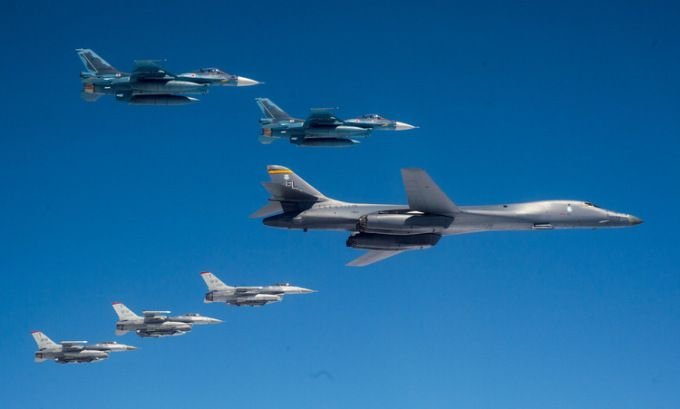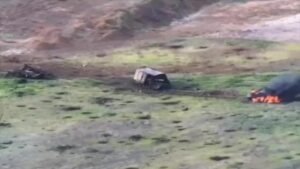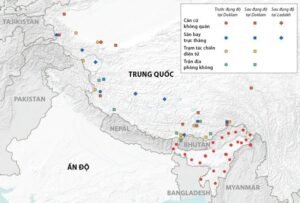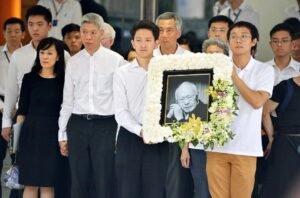
The bomber model helps the US demonstrate its power in Asia 2
After withdrawing all B-52 bombers from Guam and ending the Continuous Bomber Presence (CBP) mission here on April 17, the US has angered many allies and partners in the Asia-Pacific.
The US Pacific Air Forces (PACAF) said the B-1B squadron will perform training missions and `strategic deterrence missions` in the Indo-Pacific.
The B-1B rehearsed with US F-16 and Japanese F-2 fighters on April 22.
Not only do B-1B aircraft conduct dozens of hour-long flights to different areas, they are resuming training activities with high-precision long-range attack weapons in the Pacific, the
`What’s great about the B-1B series is that they can carry Long-Range Anti-Ship Missiles (LRASM), the perfect weapon for the Pacific theater,` said General Jim Dawkins Jr., commander of the Pacific Coordination Center.
`We are not only re-adjusting the aircraft’s mission readiness and training activities, but also changing the way we deploy to target great power competitions according to the National Defense Strategy (
The mission readiness rate represents the number of aircraft that can depart at any given time.
The NDS document published by the US government in 2018 considered China a `strategic competitor specializing in using economic power to threaten neighbors and militarize entities in the East Sea`.
The Pentagon’s strategy is to deter adversaries by preventing them from projecting military power.
`In a simulated attack, the crew will select a hypothetical target, plan and continuously fly in an area that can threaten that target without fear of retaliation. Launching long-range missiles like JASSM-
US commanders did not release details of the Lancers’ exercise activities in the Pacific, but the squadron recently began carrying the JASSM stealth cruise missile, one of the most powerful long-range air-to-ground weapons.

JASSM missiles are about to be installed on B-1B aircraft in Guam on May 8.
AGM-158 JASSM is a long-range aircraft-launched cruise missile developed by Lockheed Martin for the US Air Force.
This weapon first participated in real combat on April 14, 2018, when 19 AGM-158B JASSM-ER increased-range shells were launched from B-1B Lancer bombers against targets in Syria.
Meanwhile, the AGM-158C LRASM is an anti-ship missile developed from the JASSM platform to create a weapon that fills the gap of the AGM-84 Harpoon anti-ship missile.
The LRASM missile is equipped with a multifunctional radio probe and an advanced data link.
Each B-1B bomber is capable of carrying up to 57 tons of weapons, twice as much as the B-52 or B-2 Spirit, allowing them to carry up to 24 JASSM-ER or LRASM in a mission.
The vast area of the Pacific Ocean is well suited to the task of training in the use of long-range missiles, which is difficult to do when B-1Bs practice on the American coast.
A B-1B at the end of April made a 30-hour flight from South Dakota to Japan and back to the US.
`The B-1B squadron can become the face of America in the Pacific in the near future,` General Dawkins said, adding that current missions will pave the way for efforts to integrate hypersonic missiles.

B-1B bomber test-launched LRASM missile at the end of 2017. Photo: US Navy.
The US Air Force Global Strike Command (AFGSC) last year introduced an upgrade package for the B-1B line, allowing them to carry up to 40 missiles and bombs of all types, as well as weapons with up to
AFGSC affirms that this solution is based on the existing design of the B-1B series, does not require body modifications and ensures compliance with the New Strategic Arms Reduction Treaty (New START).
`We are pursuing an external weapon mount solution, allowing each B-1B to carry 6 Aircraft-Launched Rapid Response Weapon (ARRW) shells, while LRASM and JASSM-ER missiles are still






